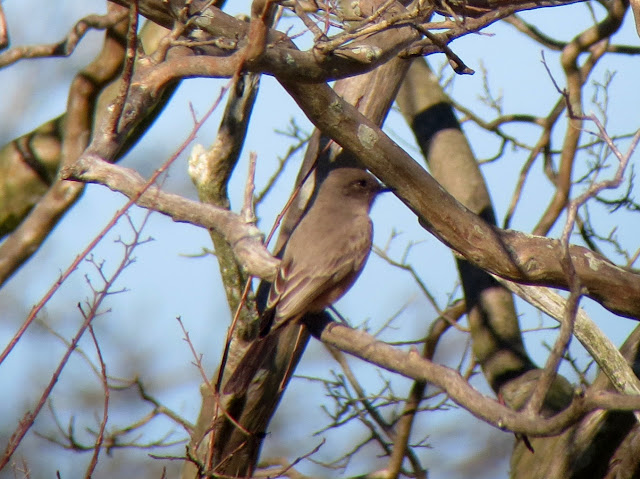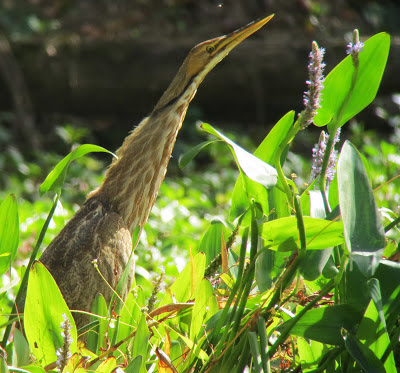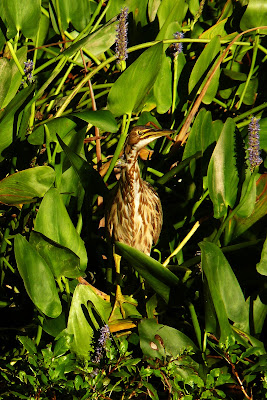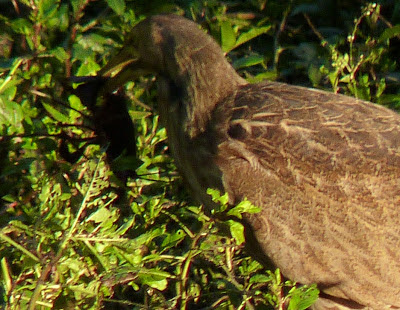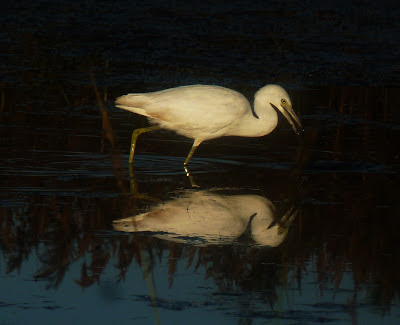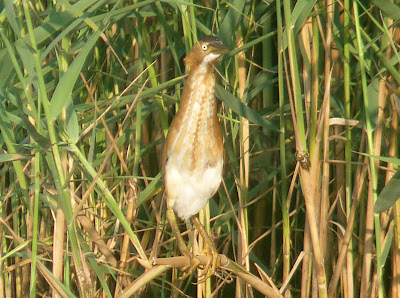This is part 2/2 of my Hispaniolan birding series. For part 1, see birding Haiti.
I had high hopes for the Dominican Republic after an exhilarating, but somewhat bleak impression of Haiti. The
Lonely Planet guidebook I picked up points birders in the direction of the Sierra de Bahoruco and a camp owned by Kate Wallace of
http://www.todytours.com/.
So after clearing the border at Malpasse I deserted my first class bus bound for Santo Domingo and hopped on the back of a motorbike. While being whisked into the dusty border town of Jimani I spotted my first Dominican bird in a rather putrid-looking roadside puddle: Black-necked Stilt. Not a bad start!
In Jimani I caught a
gua-gua (the Domnican version of the Haitian
taptap) to Duverge. I marveled at the large, relatively clean, pleasant, shady plaza in the center of town. Within a few minutes of striking up a conversation with some locals a motorbike was conjured and I was being blasted up into the countryside.
At Kate Wallace's camp in Rabo de Gato I was given a warm welcome by the Dominican host family, but was quickly distracted by the birds flitting around. It was my first Hispaniolan broadleaf forest and it seemed to be teaming with activity despite the afternoon hour...
 |
| Broad-billed Tody or barrancoli (endemic) |
 |
| Hispaniolan Lizard-Cuckoo or Pajaro Bobo (endemic) |
 |
| Stolid Flycatcher (the only Myiarchus around thankfully) |
 |
| Palmchat (endemic; the national bird) |
 |
| Hispaniolan Pewee (endemic) |
I set off along the nearby trail that follows a riparian strip and at the lagoon was pleasantly surprised to find a couple families of nesting Least Grebes.
 |
| Least Grebe |
And then I had a surreal experience with a Key West Quail-Dove that tottered up to within about 25 feet like a feral pigeon!
 |
| Key West Quail-Dove |
Hispaniolan Parrots (endemic), White-necked Crows (endemic and vulnerable), Olive-throated Parakeets (introduced from Jamaica) and Scaly-naped Pigeons were all heard and/or seen flying overhead in this area.
The next day I arranged to wake up early and have "El Capitan" drive me up to "La Placa," a dry forest area that rises up into a moist/dry transition zone and has fabulous bird habitat.
Hispaniolan Spindalis is rather common here.
 |
| Hispaniolan Spindalis (endemic) |
After hiking up toward the higher wetter end, I found a pair of Green-tailed Ground-Tanagers, that resemble and were, until a recent genetic study, thought to be warblers.
 |
| Green-tailed Ground-Tanager |
And in a mixed flock I found my only Antillean Piculet (an endemic) of the trip.
 |
| Antillean Piculet (endemic) |
Somewhat disconcerting were the several truckloads of Haitian farmworkers that passed me on the road. Farmers in a national park? I thought that problem was restricted to Haiti!
 |
| deforestation in Sierra de Bahoruco |
Basically Haitians, desperate to do anything to improve their lot, have pushed across the border into the DR where Dominicans gladly exploit them as a source of cheap labor (or worse, execute them and take whatever life savings they may have brought along). It's a tragic situation that somewhat resembles the US-Mexican border relationship. Americans and Dominicans bemoan the lack of border security, yet unwittingly rely on cheap illegal immigrant labor to deliver the food they consume.
The big loser is the Sierra de Bahoruco National Park, which is being cut for charcoal and then farmed for potatoes and beans. This goes on despite the significant military presence in the area (I probably passed through two dozen checkpoints in the DR). The (probably poorly paid) soldiers apparently have little incentive to enforce the rules of international and park borders and prefer to be bribed to do nothing.
 |
| The view into Haiti from the aguacate military post |
Clearly this cannot continue or the Dominican Republic will eventually look like Haiti--denuded and depauperate.
Well I suppose that will make the Kestrels happy.
 |
| American Kestrel (endemic subspecies) |
On the way back down to camp I finally got my Hispaniolan Trogon. Its near-threatened status per the IUCN seemed all the more justified.
 |
| Hispaniolan Trogon (endemic; near-threatened) |
That afternoon Kate Wallace arrived with a client, a career army man in the Pentagon who I'll just refer to as "Captain America."
The three of us set off on a little stroll down the same path I had taken the day before. We were having a great time looking at both tody species in the same tree, finding surprisingly early Louisiana Waterthrush, and ogling the multicolored snails that apparently are abundant enough to encourage Limpkins to wander around in upland dry forest (a bizarre sight!).
 |
| Limpkin food |
|
|
Then just when we were about to turn back Kate got badly gouged in the eye by a stick as we were moving a branch from the trail. Luckily Captain America was there to apply first aid and she avoided getting an infection. Despite unimpaired vision she prudently declared herself unfit for driving and deputized me as Captain America's driver and guide for the following morning (wahoo!).
So up we rose at 0400 hours the next mourning to head up into the prime cloud forest with a local guide, named Raphael. Along the way we flushed four Burrowing Owls from the road (endemic subspecies) and stopped to hear both Hispaniolan Nightjar (endemic) and Least Paraque (endemic). I played some tapes and shined my light around, but we weren't able to see either caprimuligid in the little time we wished to spare.
On we went ascending until we reached La Selle corner. Here we were given a wonderful predawn serenade by Rufous-throated Solitaires and La Selle Thrushes (endemic; endangered), the latter which once we had some light, could be seen out feeding in the road.
 |
| La Selle Thrush (endemic; endangered); note terrible predawn light |
Up here we heard several White-fronted Quail-Doves (endemic; vulnerable) calling to each other, but were never able to see one. Green-tailed Ground-Tanagers were locally abundant here and we saw a couple Hispaniolan Highland-Tanagers (endemic; Vulnerable), Hispaniolan Emerald (endemic) and several other previously mentioned species.
 |
| Hispaniolan Emerald (endemic) |
Hiking onward and upward the forest became monotypic pine and I noted for the first time epiphytic vegetation growing on pine trees.
 |
| Pines and bromeliads? A first for me |
In this area we found Antillean Siskins (endemic), Pine Warblers (endemic subspecies) and Hispaniolan Crossbills (endemic; endangered).
 |
| Hispaniolan Crossbill (endemic; endangered) |
Captain America was especially excited about the crossbill since it was his first
Loxia and he had searched for them diligently across several continents.
But the best bird for me was the Bay-breasted Cuckoo or
Cua (endemic; endangered) we saw on our way back down near La Placa. It's the bigger badder brother to the Lizard-Cuckoo and quite a tough bird to get. I had already been tantalized by calling birds that refused to show themselves on three separate occasions the day before.
Our final endemic was a pair of Flat-billed Vireos we had shortly after the cuckoo.
 |
| Flat-billed Vireo (endemic) |
And then we had to hurry back to camp to check on Kate's wounded eye and make the trip back to Santo Domingo so Captain America could catch his flight home the next morning.
I had one last day, so I went out to bird the botanical garden, which mostly was loaded with common species
 |
| Greater Antillean Grackle |
 |
| Common Ground-Dove |
But the reason I went was to see Hispaniolan Parakeets (endemic; vulnerable) and West Indian Whistling Duck (vulnerable), my 1600th life bird!
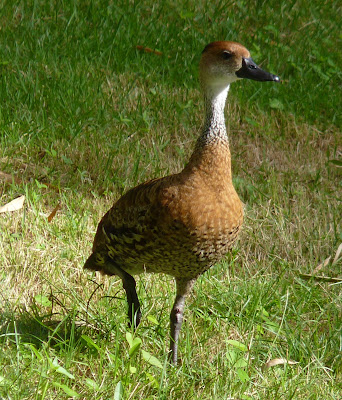 |
| West Indian Whistling Duck |
It was fitting that I should hit that kind of a milestone at the end of such an amazing and eventful trip. I ended up seeing 37 life birds and 24 of the 31 Hispaniolan endemics with 3 others heard only. The remaining four that escaped me were Ashy-faced Owl, which I never had a method to try for; Gray-crowned Palm-Tanager, which is endemic to southwestern Haiti; Ridgway's Hawk and Eastern Chat-Tanager, both of which cannot be found in the areas I birded.
So I would highly recommend getting in touch with Kate Wallace (her eye is fine) and booking yourself a Tody Tour.
If South America is the all-you-can-eat buffet of endemic birds, then the Dominican Republic is the fast food joint that's a bit closer, quicker and easier to get to. The birds and forests could certainly use your patronage before they disappear!
